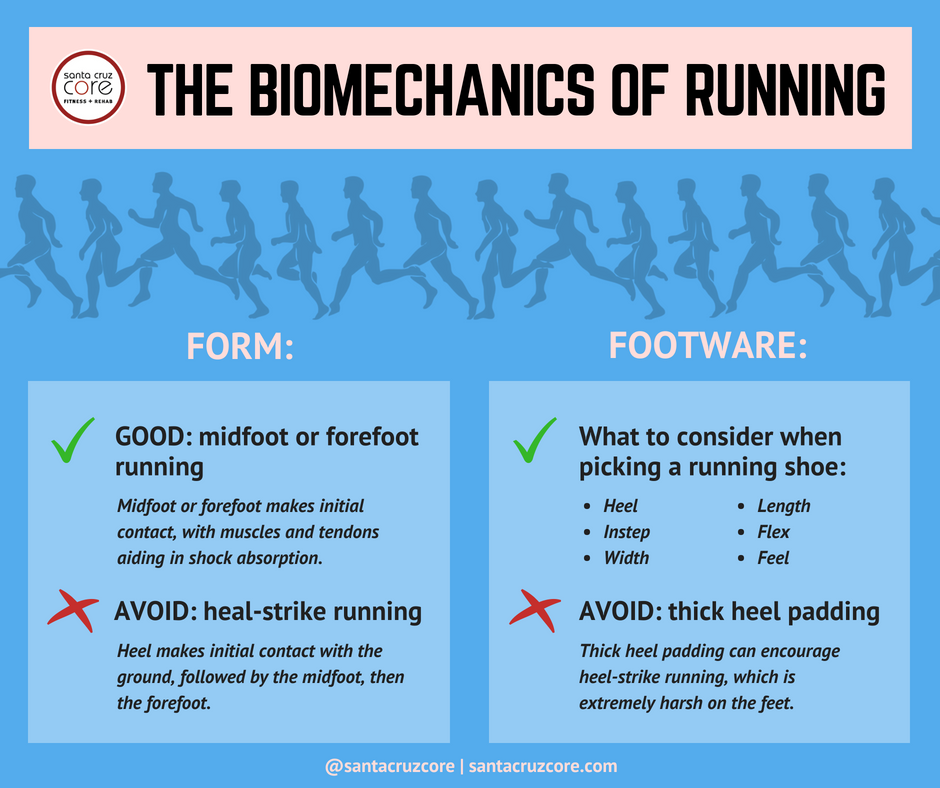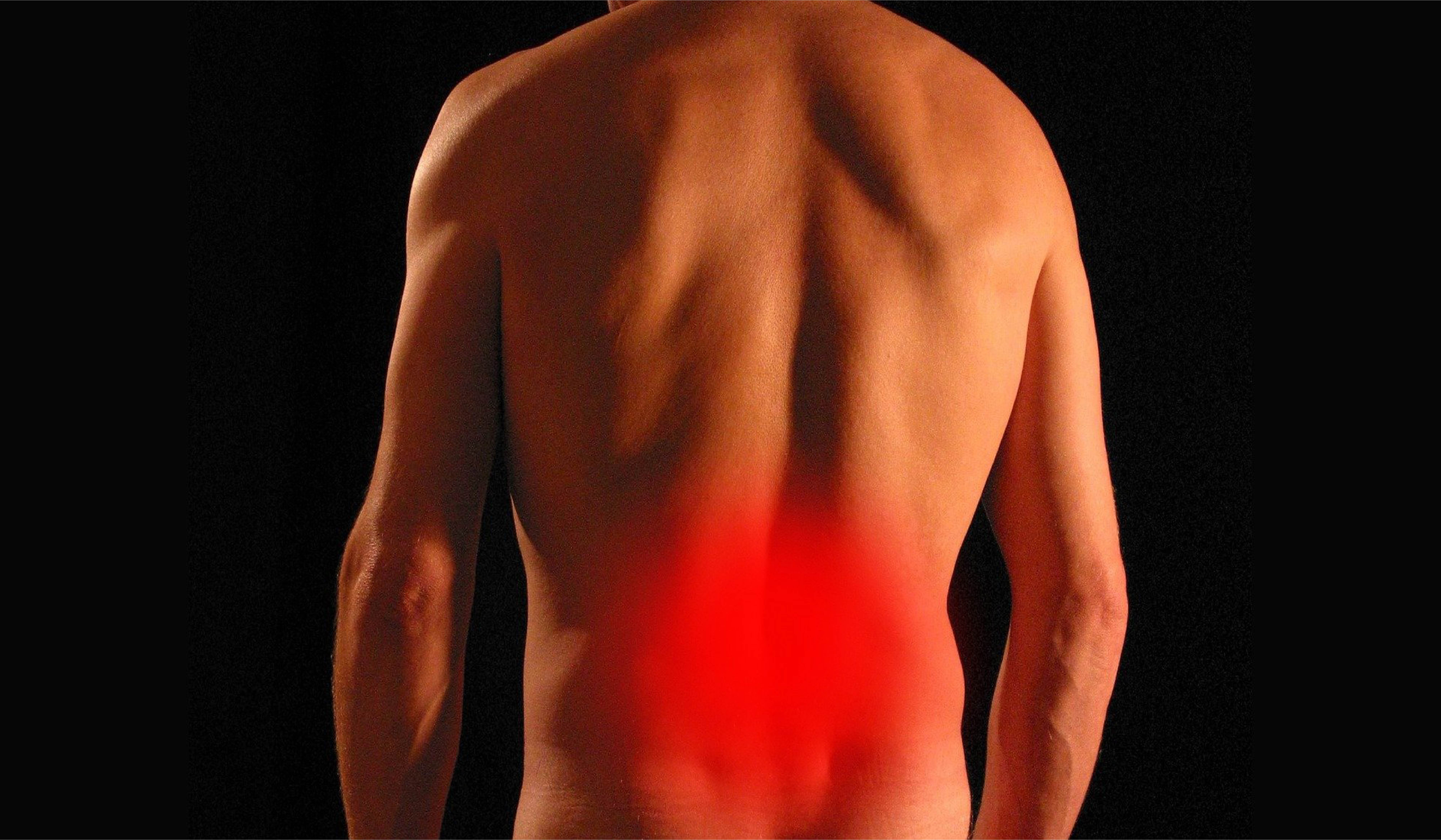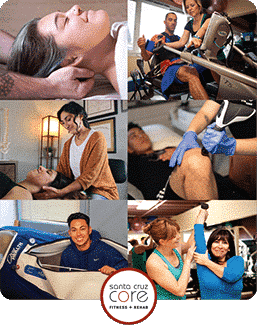Running is one of the most common modes of cardiovascular exercise.
It is convenient, works up a good sweat by engaging the skeletal, muscular, respiratory, and cardiovascular systems, and can be done almost anywhere. However, there is much to understand behind the biomechanics of running in terms of correct form and footwear. When performed correctly, running is an excellent way to strengthen the lower body, build endurance, and improve body composition. If you’re serious about running or want to improve your form, use this as your guide to efficient and safe running.

Form:
Before footwear can be considered, it is crucial to ensure that you are running with proper form. More often than not, inexperienced runners engage in “heel strike running” as opposed to “midfoot or forefoot strike” running. Heel strike running happens when during each stride, your heel makes initial contact with the ground, followed by the midfoot, then the forefoot. This form of running can be extremely harsh on the foot, as there is significantly less padding to support the heel, compared to the mid and forefoot which are surrounded by more soft tissue and muscles, allowing for greater shock absorption. In addition, excessive dorsiflexion of the foot during heel-strike running can lead to shin pain.
Midfoot and forefoot running is more efficient in that it maximizes efficiency by utilizing strain energy. When you land on the midfoot or forefoot, muscles and tendons briefly lengthen to aid in shock absorption. The muscles and tendons lengthen slightly, absorbing mechanical energy as your foot contacts the ground. Almost immediately, these muscles contract and use that stored energy to propel you forward.
Benefits:
Running with proper form also engages the correct muscle groups, allowing you to decrease the risk of injury due to muscle imbalance. Power in your stride should come from primarily the gluteal muscles.
Proper posture is essential to good running form and can compromise efficiency if you tend to heel-strike. Heel strike running encourages a slight backward lean and decreases power, as this form acts as a braking mechanism and will slow you down. Midfoot and forefoot running, on the other hand, creates a slight forward lean that serves as momentum with each stride. When running, the shoulders should be back and down, keeping the chest open. Arms should be bent almost to 90 degrees and should swing naturally with each stride. Keep the hands closed loosely as if you were grasping a paper scroll in each hand. As with almost any form of exercise, be sure to keep the core engaged by drawing the navel in toward the spine.
Footwear:
Choosing the right running shoe can be difficult, as there is an overwhelming number of options on the market. Choosing the correct shoe has much to do with form, and most running shoe stores offer services to analyze your gait and form in order to help you select the right shoe. Running shoes that fit improperly or are designed poorly can lead to discomfort, pain, and injury, but the proper shoe will allow you to maximize efficiency. Running shoes tend to come in a few common styles based on the level of cushioning. Each individual will have specific needs based on their unique foot structure, gait, and desired running environment. Try to avoid shoes with thick heel padding, as it can actually encourage heel-strike running. Runner’s World suggests 6 elements to consider when picking a running shoe:
- Heel
- Instep
- Width
- Length
- Flex
- Feel
Our practitioners at CORE are well equipped to identify and relieve muscle imbalances resulting from an improper running form. Improving strength and endurance through our personal training and group training services will translate into greater efficiency and reduce the risk of injury when you run!
Check out our services to maximize performance, grab a buddy, and get moving! Here is an introductory offer to get you moving…











Leave a Reply